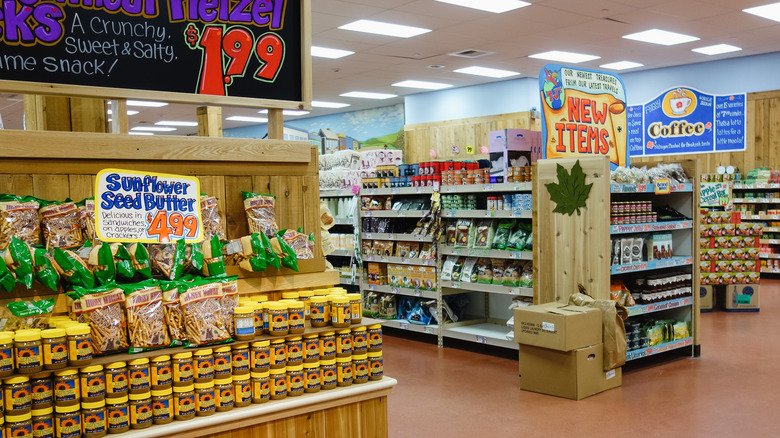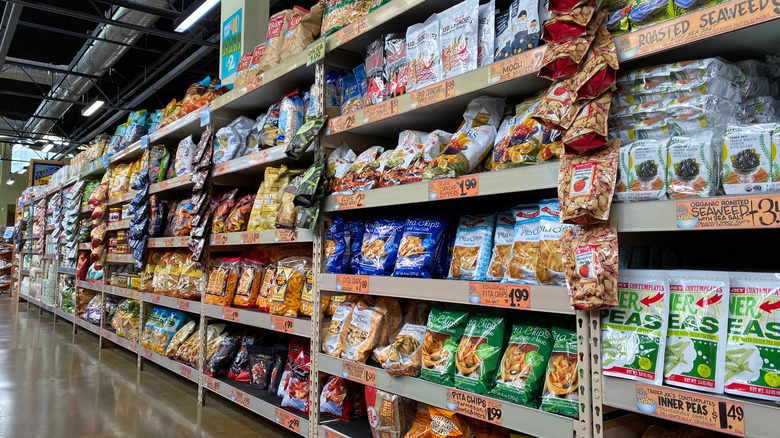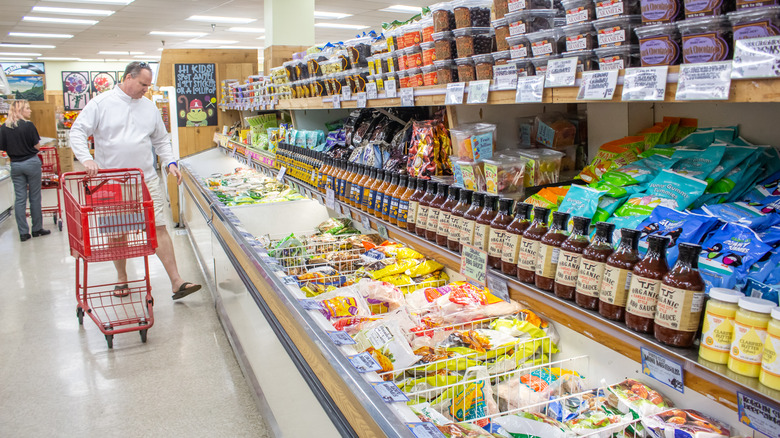The Real Reason Trader Joe's Is So Cheap
If you're hard-pressed to find another reason to love Trader Joe's, let's talk about what makes its beloved products so affordable. Ranging from Trader Joe's original, delicious, and ever-changing pre-packaged meals to unique flavor combinations that continue to inspire foodies around the world there's a lot to like about the popular grocery chain. (For one example of this out of many, look no further than Eater's "the best thing at Trader Joe's" series.)
One thing that remains consistent at every Trader Joe's store is the surprisingly low markup for the franchise's products. for some Trader Joe's customers, the prices of the supermarket chain's goods don't always seem to make sense. How is TJ's able to stay afloat? Is it all a joke? A lie? A dream? Far from it. Here's how Trader Joe's cuts back on the prices of its cherished goods and makes healthy and sustainable living more accessible.
Trader Joe's cuts out the middleman
As is the case for most genius ideas, there are a few different factors that make Trader Joe's prices stand out from the rest. One of the most significant components is its ability to sell directly from suppliers. According to Today, 80% of Trader Joe's products come from its own private label. Sure, this means you won't be able to find popular household brand names like Heinz in stores, but you do get their friendly equivalents. (In the case of Heinz products, that happens to be a treasure trove of affordable organic condiments per their website – so no harm, no foul, right?) This method of selling means Trader Joe's can price popular healthy products more cheaply than other stores. For reference, a bag of quinoa goes for $9.99 at Whole Foods but sells for only $4.99 at Trader Joe's, according to Business Insider.
Aside from the vantage point of determining how and what original products hit the shelves by way of their own product line, the way Trader Joe's designs the layout of its stores is also a way the chain helps cut down on costs. With minimal additions in-store, like very few decorations, and calculated use of packaging, Trader Joe's is able to cut costs by refraining from adding unnecessary flair to the shopping experience (via Business Insider). This means stores often have a warehouse feel similar to some European grocery chains, and products are rarely sold in bulk or with excessive plastic packaging.
... but there's a price to cutting costs at Trader Joe's
While Trader Joe's exclusive use of its own in-store product lines has a lot of benefits, it's also a double-edged sword. The main reason? You can't buy Trader Joe's products anywhere but from a Trader Joe's, so if there's not a store near you, you're out of luck.
If a Trader Joe's product doesn't sell as well as some of the store's more popular goods, the store will usually pull that product off the shelves and replace it, according to Taste of Home. This has led some loyal shoppers to feel as if they're on the verge of heartbreak — that is, if one of your favorite items is pulled without warning, and possibly forever. The only way you might find out that a product could be pulled in advance is by reading the store's exclusive newsletter, as Trader Joe's also cuts costs by mostly relying on word-of-mouth advertising. (That's another way Trader Joe's is able to cut costs, by the way; per Business Insider, the supermarket chain's loyal but large customer base works as their best marketing campaign, rather than outside advertising.)
With all of Trader Joe's economical, cost-cutting techniques, the company is able to give its customers their signature products at an affordable price setting. Despite a few potential downfalls, most shoppers seem to think that the low costs make shopping at TJ's more than worth it.


